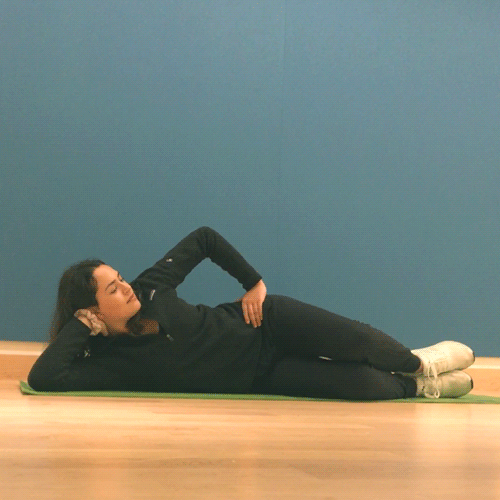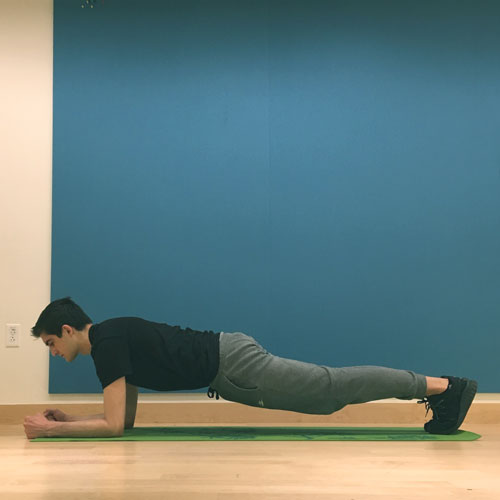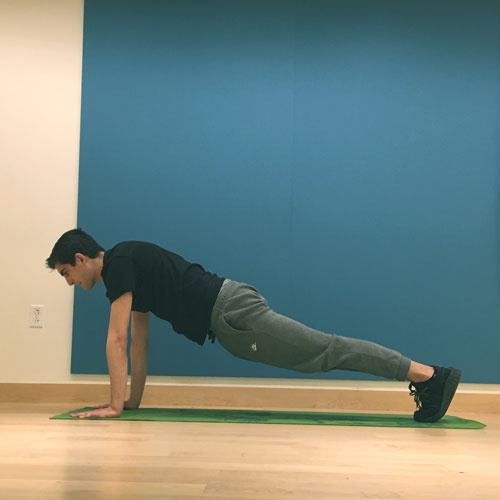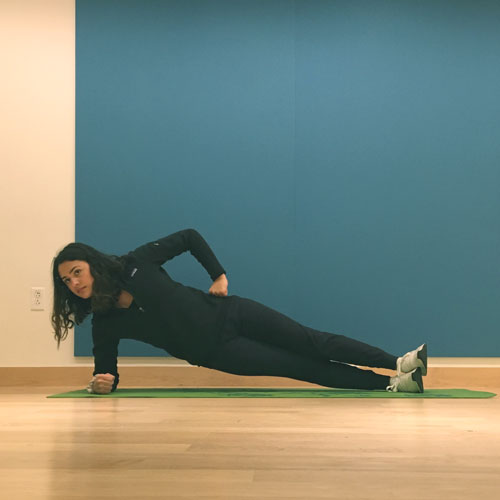Fitness: All Guides
Fitness: Strength Training Exercises

Strength training is a great way to get your muscles conditioned and strong. This form of exercise can help raise your metabolism (the way your body uses energy from food) and will keep your bones strong, which may help prevent future osteoporosis. Strengthening your muscles can even help to release stress from your body. Try the following workouts for your upper, middle (core), and lower body!
Helpful Tips:
- While doing these exercises, focus on your breathing (deep inhales and exhales)
- Check out the My Muscles guide as a reference for what muscles you are working.
Workout 1: Lower Body
How to: Start with the first exercise on this list. Perform the exercise 8-12 times (if you are a beginner, aim to complete 5 repetitions of the exercise). Once you finish, move on to the next exercise, until you finish all 6 exercises. Repeat this entire set 1-3 times.
Floor Bridges Clam Shells Squats Reverse Lunges Side Lunges Standing Calf Raises
Workout 2: Upper Body
How to: Start with the first exercise on this list. Perform the exercise 8-12 times (if you are a beginner, aim to complete 5 repetitions of the exercise). Once you finish, move on to the next exercise, until you finish all 6 exercises. Repeat this set 1-3 times.
Push-ups Up and Down Plank Bicep Curls Triceps extensions Chest Press Overhead Press
Workout 3: Core (Middle body)
How to: Start with the first exercise on this list. Perform the exercise 10-15 times OR hold the position for 20-30 seconds. Once you finish, move on to the next exercise, until you finish all 6 exercises. Repeat this set 1-3 times.
Plank SupermansRight/Left Plank Bicycle CrunchesV-Sit Leg raisesFitness: My Muscles

Fitness is fun! It’s a great way to improve your overall health and wellness. Through exercise, you may even find you feel less stressed and more relaxed. You’ll have more energy during the day too! However, the number one way to make exercise a part of your life is by participating in activities you find fun and enjoyable. It may help to exercise with a friend or family member.
Exercise Safety
It’s important to consult your health care provider before starting any exercise program. The exercises featured in the strength training fitness guide here are for teens that are in good health and have no physical restrictions. Be sure to listen to your body. Exercise should feel like you are working out (your breathing should be heavier than normal and you might break a sweat), but not like you are injuring your body. If a particular exercise or stretch hurts, STOP immediately. You may be performing the exercise incorrectly, working beyond your limits or injuring your body. If you feel dizzy, have trouble breathing, or experience any pain while you are exercising, STOP, and talk to your health care provider about next steps.
Your body needs energy (food and fluids) to perform at its best. Our sports nutrition guide will help you understand what you should eat and drink before, during and after exercising so that you will feel energized, build and repair muscles, and have a safe workout.
My Muscles
Understanding the names and locations of your muscles is important when you’re exercising. If you know the specific muscles you’re using, it is easier to focus on each aspect of your workout. This helps you to be more efficient and to prevent injuries.
How to use My Muscles:
- Learn the names of your muscles and where they are located on the body by looking at the pictures below.
Look at both views: front (anterior) and back (posterior)


Fitness: Stretches

Stretching is a way to get your body ready for exercise, improve flexibility, and increase your range of motion. Proper stretching will help your muscles feel relaxed and prevent muscle related injuries. Try the following static stretches (meaning that you will not be moving around for the stretch) demonstrated by our Peer Leaders. For each stretch, hold for 30 seconds at a time. Make sure you go into the stretch slowly and hold the position when you start to feel some tension in the muscle. If you feel pain, stop immediately- this means you may be stretching the muscle too far. Check out the My Muscles guide to see which muscles you will be stretching using these exercises.
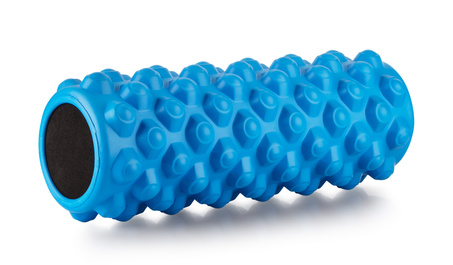
Other great ways to stretch include dynamic stretching (a movement-based type of stretching) and foam rolling using a foam roller!
 Young Men's Health
Young Men's Health

